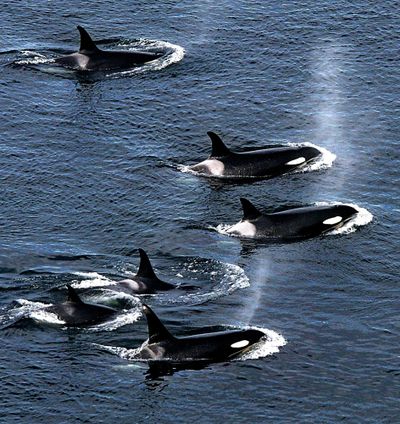Orcas have learned how to hunt and kill huge whale sharks, video shows

A pod of orcas off the coast of Mexico appears to have learned new skills that help them hunt whale sharks – the world’s largest fish, scientists say.
A study published Friday in the journal Frontiers in Marine Science documents a number of hunting events in the Gulf of California between 2018 and 2024, captured in photographs and video footage by members of the public and scientists.
The orcas were identified by analyzing photographs of dorsal fins and distinctive features like scars.
Researchers found that the pod worked together on four occasions to incapacitate whale sharks and feast on their organs, including lipid-rich livers.
“When hunting, all pod members work together, hitting the whale shark to turn it upside down. In that position the sharks enter a state of tonic immobility and can no longer move voluntarily or escape by going deeper,” Erick Higuera Rivas, a marine biologist at nonprofit group Conexiones Terramar and a lead author of the study, said in a news release.
“By keeping it under control, the orcas then have greater ease and speed in approaching the pelvic area of the shark and are able to extract organs of nutritional importance for them,” he added.
Although they are known as killer whales, orcas are actually the largest member of the dolphin family. They were given the nickname by early sailors who observed them hunting in groups and preying on larger whale species. They have been known to feed on everything from fish, seals and sea lions to octopuses and sea birds.
There are documented incidences where orcas have preyed on other shark species, including great whites. In 2022, scientists reported how a pack of killer whales ganged up to kill a blue whale. A recent spate of orcas striking and, in some cases, sinking boats around the Strait of Gibraltar has put European yachters on edge.
It is relatively rare, however, for these predations to be captured on camera, especially when the meal the orcas are hunting is so large.
Whale sharks typically grow up to 40 feet – the length of a school bus – and can measure as long as 60 feet, according to the researchers. Despite their size, whale sharks eat mostly small organisms like plankton, schooling fish and squid, which they scoop from the water as they swim.
Orcas are smaller: male orcas grow to about 30 feet. They are renowned for hunting in groups, which scientists say makes them incredibly effective predators.
Scientists suspect that orcas prey on whale sharks in the Gulf of California as they gather to feed there – especially younger sharks that are more vulnerable to predation. Whale shark numbers are declining worldwide: the docile giants were listed as endangered in 2016.
The hunting events in the study appeared to support that theory. One male orca, which the scientists dubbed “Moctezuma,” took part in three of the four hunts they analyzed. (Moctezuma was an emperor of the Aztec Empire.)
In one video, a whale shark lies on its back, prone and bleeding from a pelvic wound while “Moctezuma” circles. In another, a pod surrounds a partially submerged, upturned whale. The researchers said orcas may target whale sharks’ ventral side because it is an area of their bodies that is thought to be the least protected.
“It is very impressive how orcas work together strategically and intelligently to access only a very specific area of the prey. It highlights what great predators they are,” said Higuera Rivas.